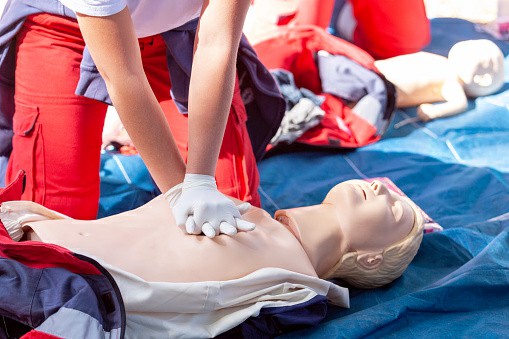Empower Your Workplace: Why First Aid and CPR Training is Essential
In any workplace, safety should be a top priority. One of the most effective ways to enhance workplace safety is through comprehensive First Aid and CPR training. This training not only equips employees with essential skills to respond effectively to emergencies but also fosters a culture of safety. In this blog, we’ll explore the many benefits of First Aid courses, the importance of First Aid Certification, and practical applications that can significantly impact your workplace.
The Value of First Aid Certification for Employers and Employees
Having certified personnel on site can be invaluable. Here are some key benefits:
- Enhanced Safety and Preparedness: Employees trained in First Aid and CPR are equipped to handle emergencies, from minor injuries to life-threatening situations.
- Boosted Employee Confidence: Knowing how to respond in critical situations empowers employees and reduces panic during emergencies.
- Increased Morale: A workplace that prioritizes health and safety fosters an environment of care, leading to greater employee satisfaction.
- Lower Insurance Premiums: Companies with trained employees may benefit from reduced insurance premiums due to lower workplace injury rates.
Critical CPR Techniques Every Workplace Should Implement
Cardiopulmonary Resuscitation (CPR) is one of the most vital skills taught in Emergency First Aid Training. Knowing how to perform CPR can mean the difference between life and death during a cardiac event. Key components include:
- Recognizing an Emergency: Train employees to identify when someone is in need of CPR.
- How to Perform CPR: Proper techniques ensure airflow and blood circulation are maintained.
- Using an AED: Defibrillators are essential tools; training on their use can enhance survival rates.
Navigating Workplace Health and Safety Regulations through Effective First Aid Compliance
Regulatory compliance is a significant aspect of workplace safety. Many jurisdictions require businesses to have a certain number of trained first aid responders based on the number of employees. Key points include:
- Understanding Legal Requirements: Familiarize yourself with the workplace first aid requirements specific to your area and industry.
- Regular Updates: Ensure that training is recurrent and up to date, which is often mandated by health and safety regulations.
- Documentation: Keep accurate records of training and compliance to avoid legal repercussions.
Immediate Response: Essential Emergency First Aid Procedures
While CPR and first aid techniques are critical, the first step is often managing the immediate environment:
- Assess the Situation: Ensure it’s safe to approach and that you can assist without additional danger.
- Clear Communication: Assign roles accordingly; one person should contact emergency services while others can attend to the victim.
- Basic First Aid Skills: Cuts, bruises, burns, and more – employees should be familiar with the proper methods for treating common workplace injuries.
Selecting the Ideal First Aid Training for Your Workplace
Choosing the right First Aid course for your team is crucial. Consider the following:
- Reputation of the Training Provider: Research the credentials and reviews of the training organization.
- Course Content: Ensure the course covers all essential topics, including CPR techniques and specific workplace scenarios.
- Training Format: Decide whether in-person or online First Aid courses suit your team better.
Conclusion & Call to Action
Investing in First Aid and CPR training is an investment in the safety and well-being of your employees. By fostering a culture of preparedness, you not only comply with legal standards but also empower your workforce to handle emergencies confidently. Ready to take the first step? Enroll in a certified First Aid & CPR training course today!
For inquiries, please contact us at [email protected].



 349,500 Offered Certificates
349,500 Offered Certificates
 24/7 Online Training
24/7 Online Training
 Money Back Guarantee
Money Back Guarantee
 Fully Accredited Courses
Fully Accredited Courses
